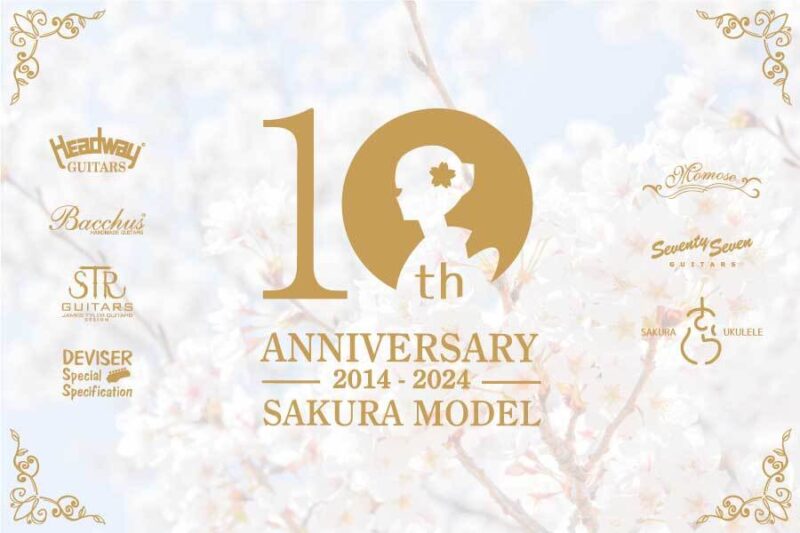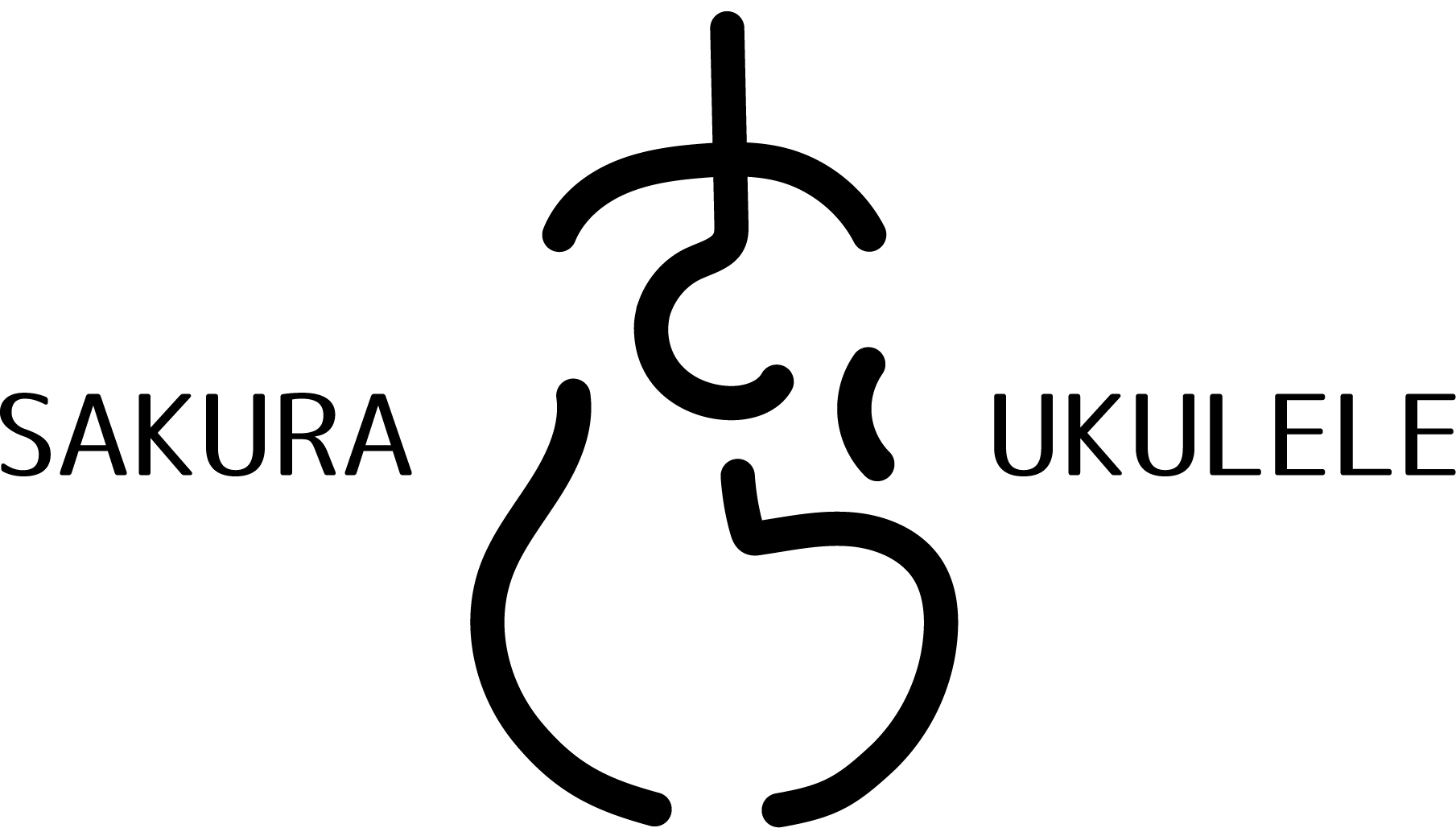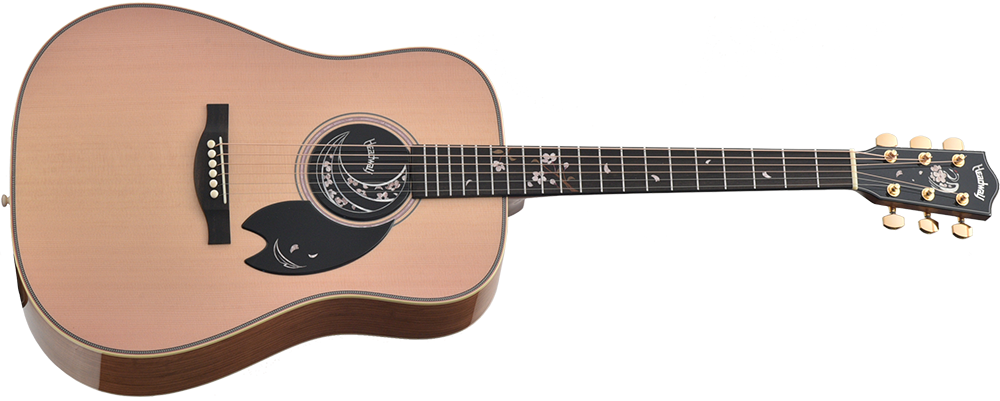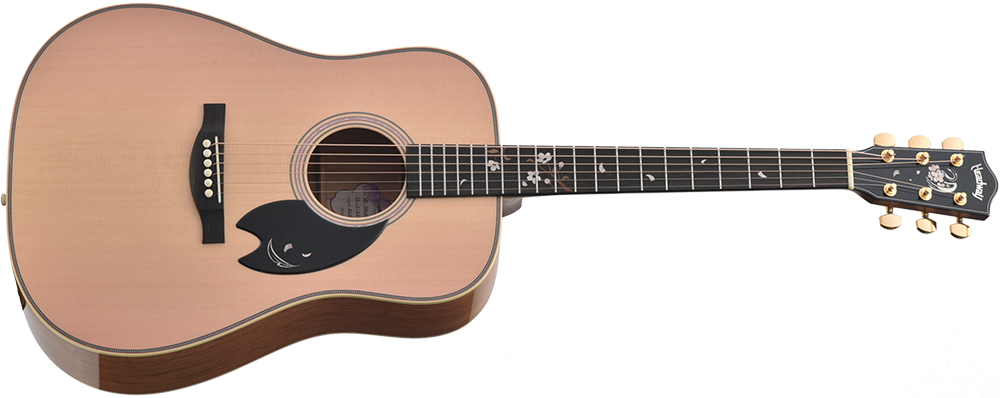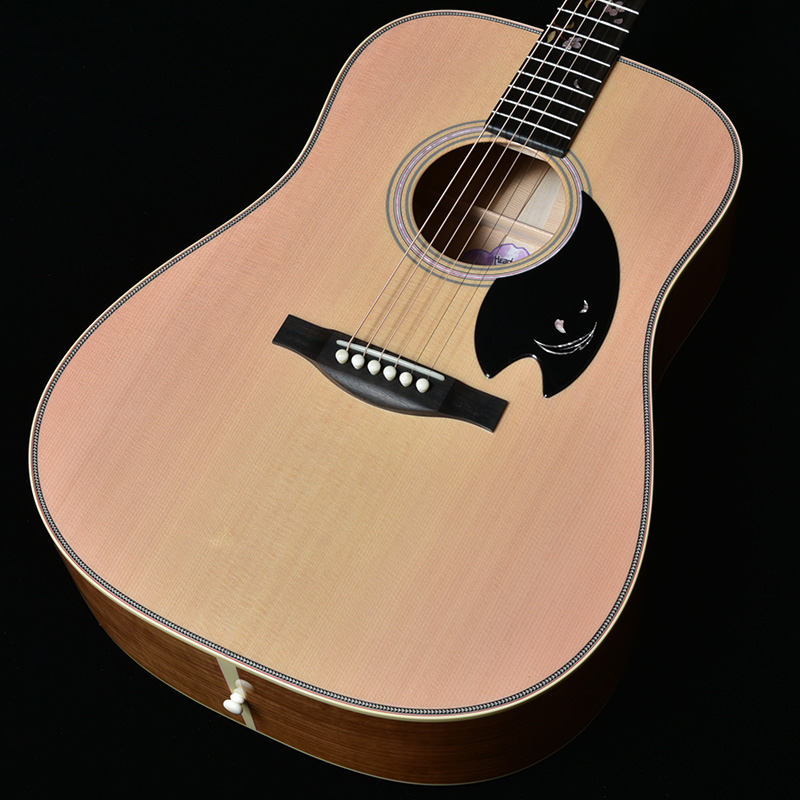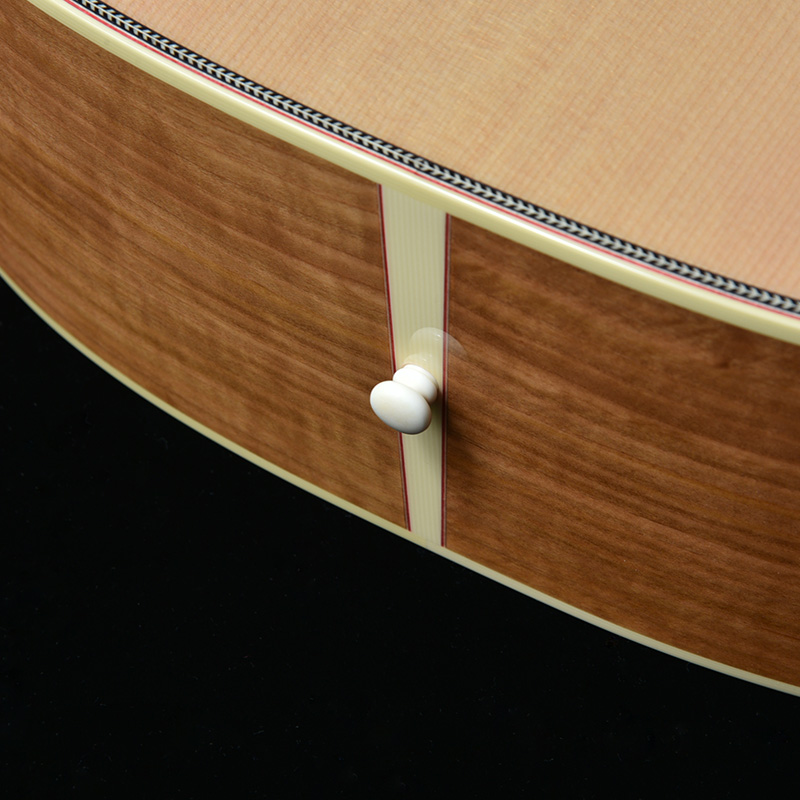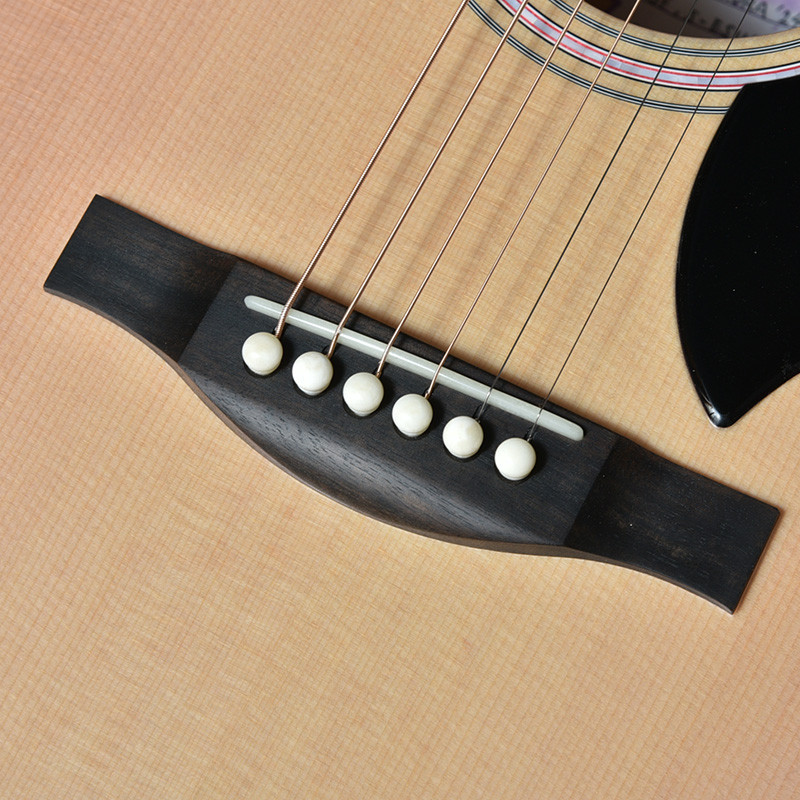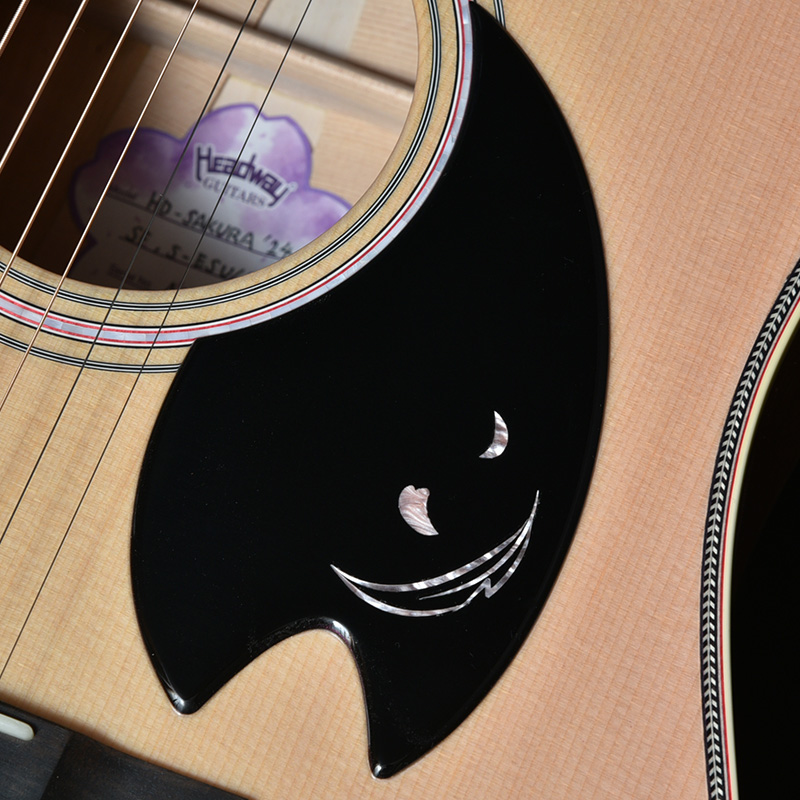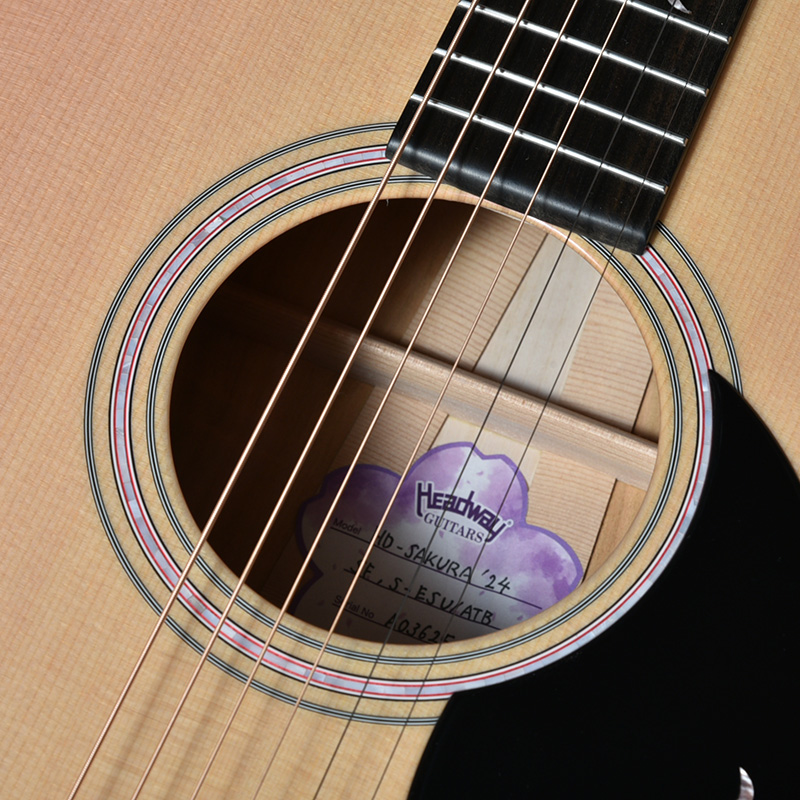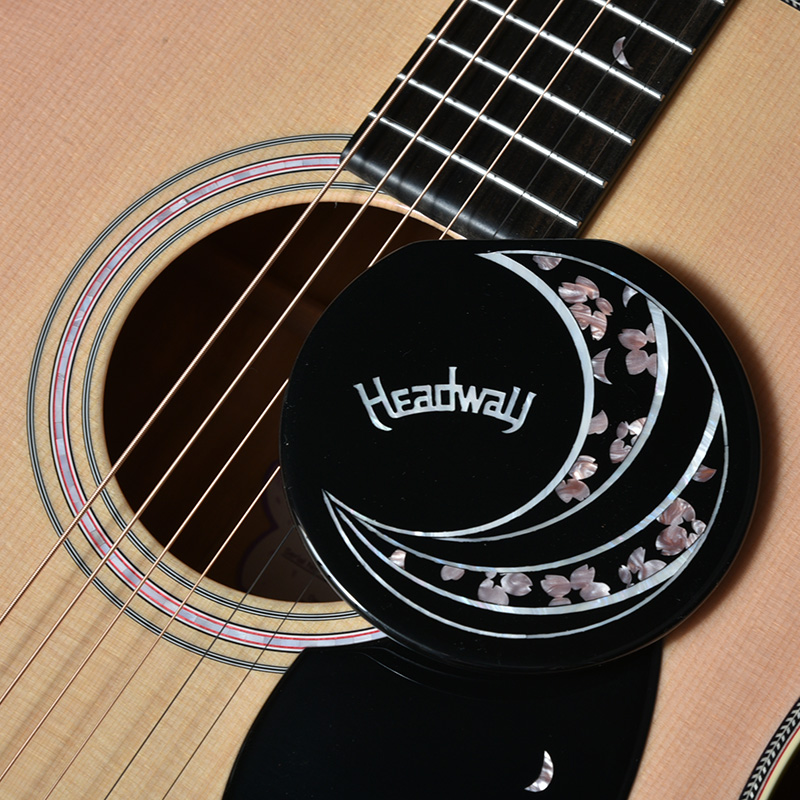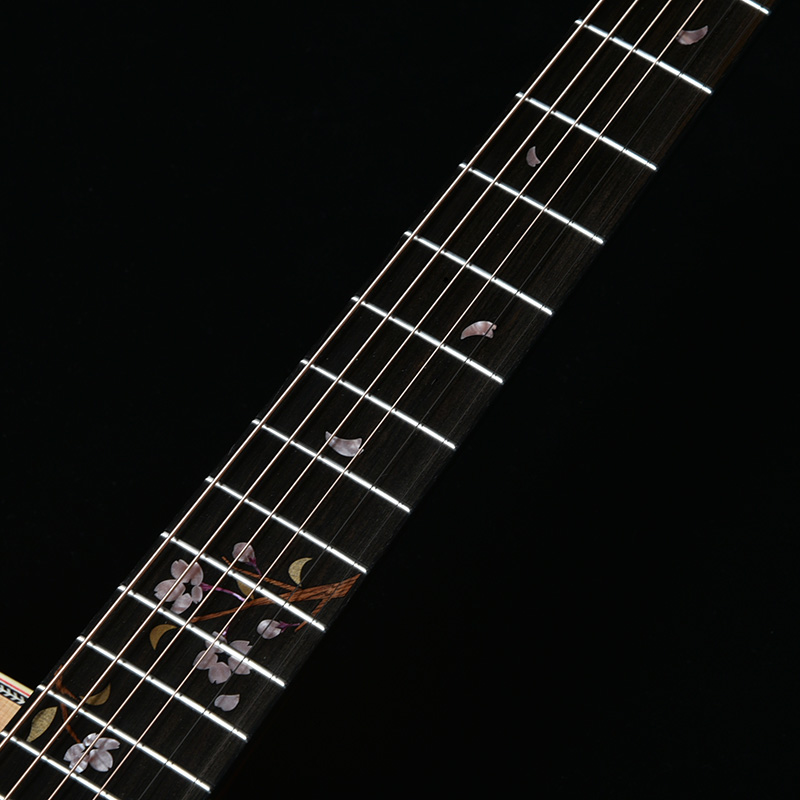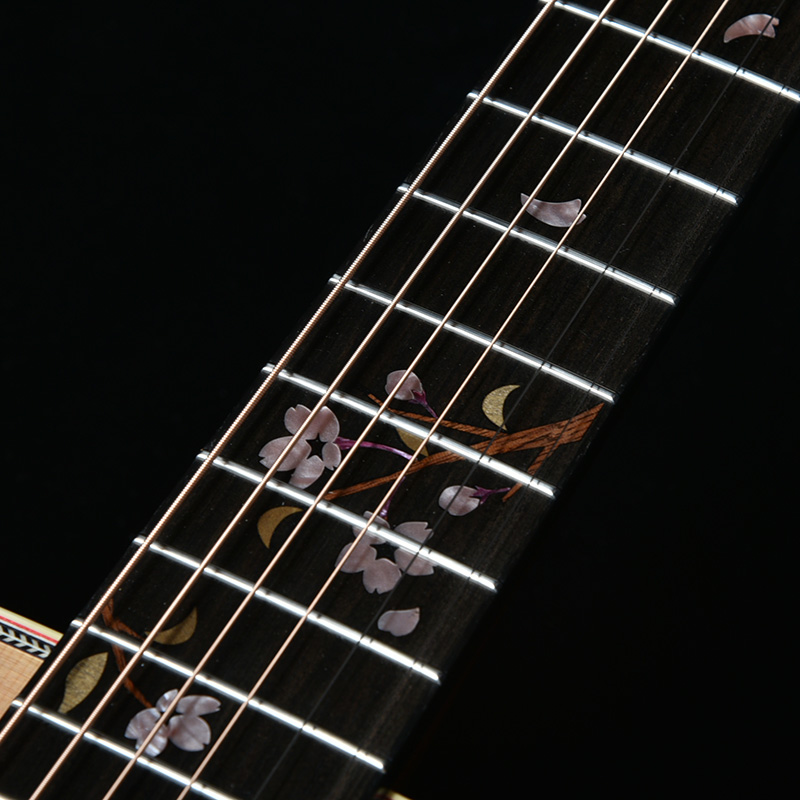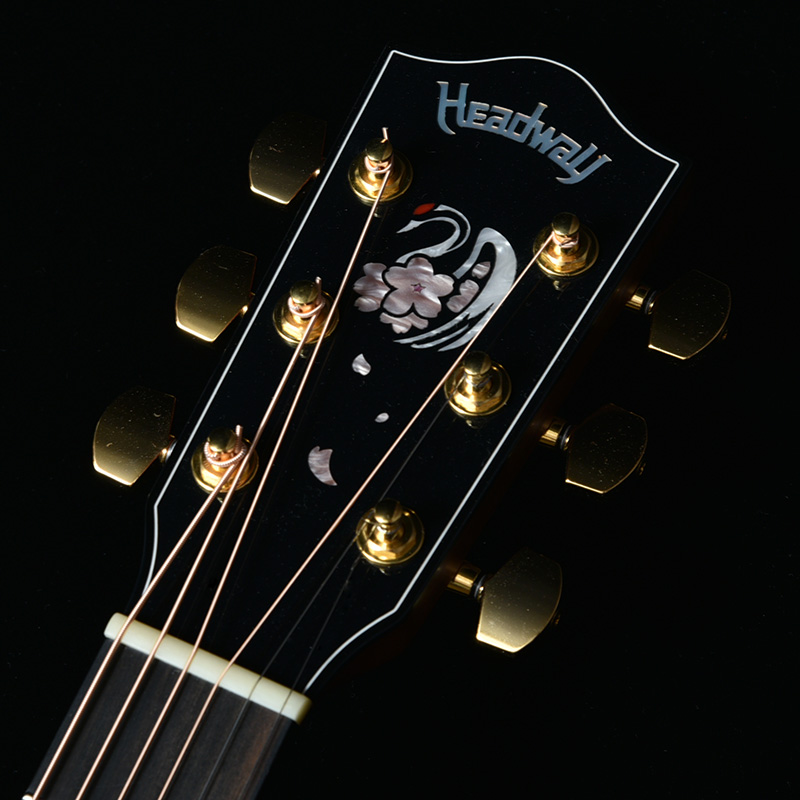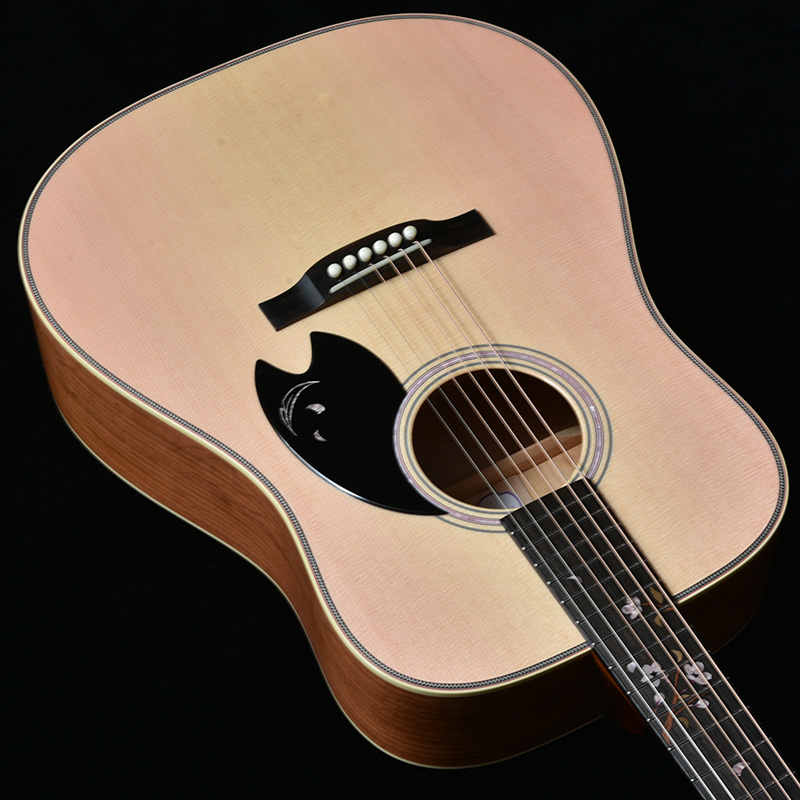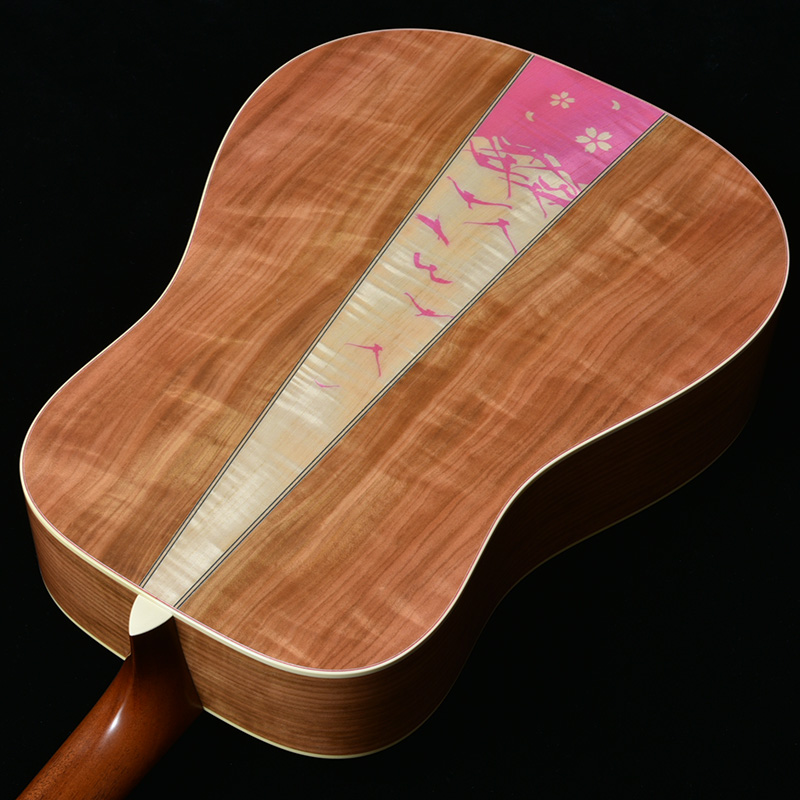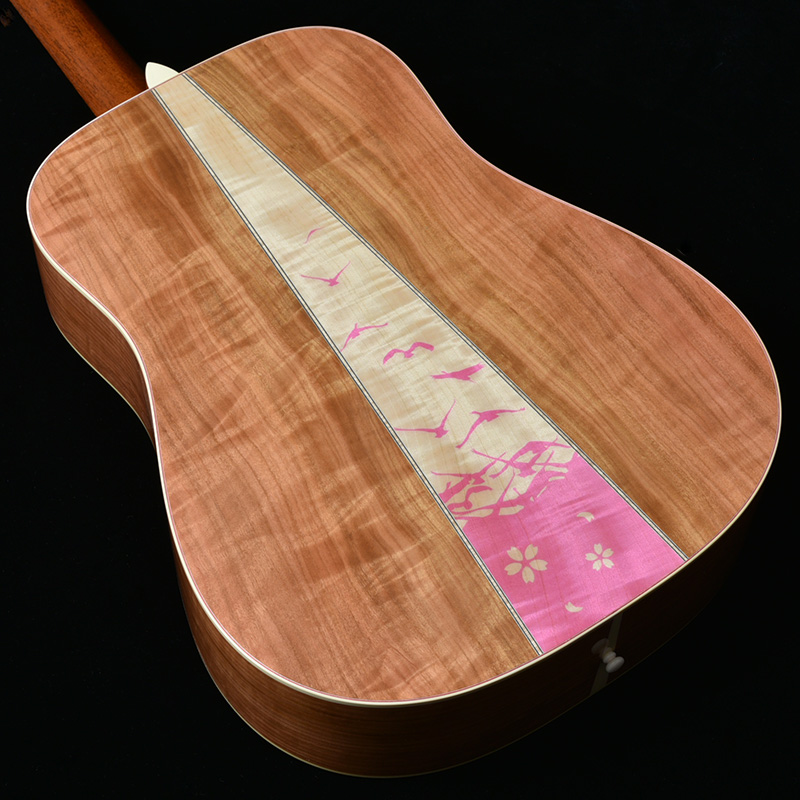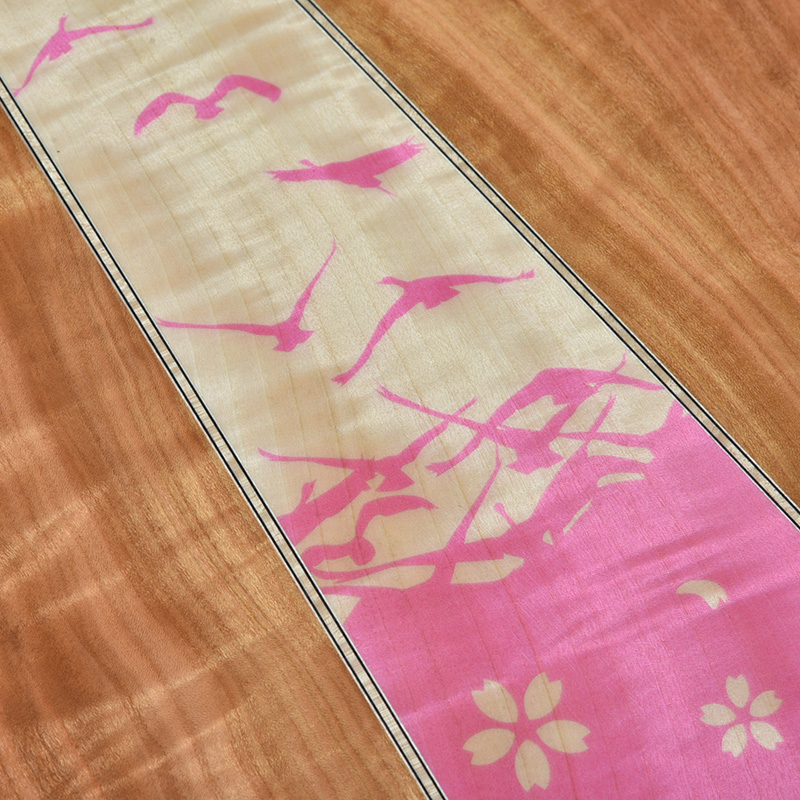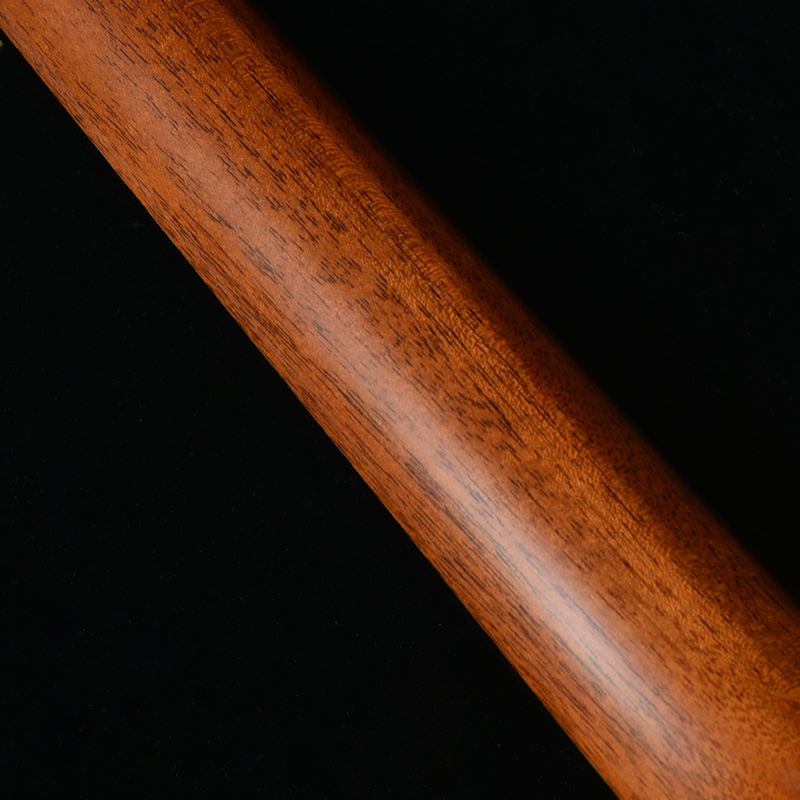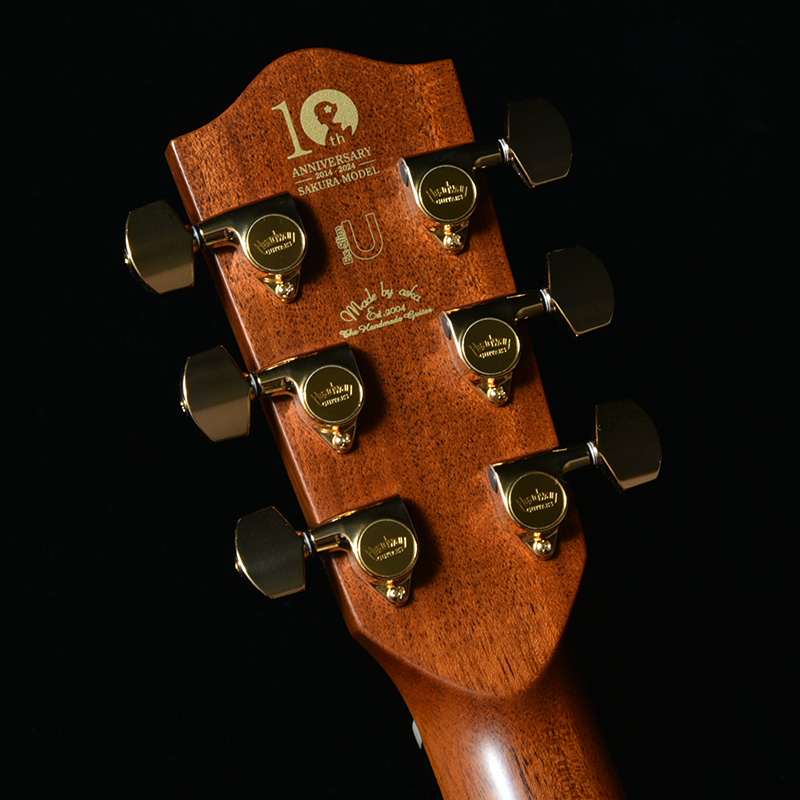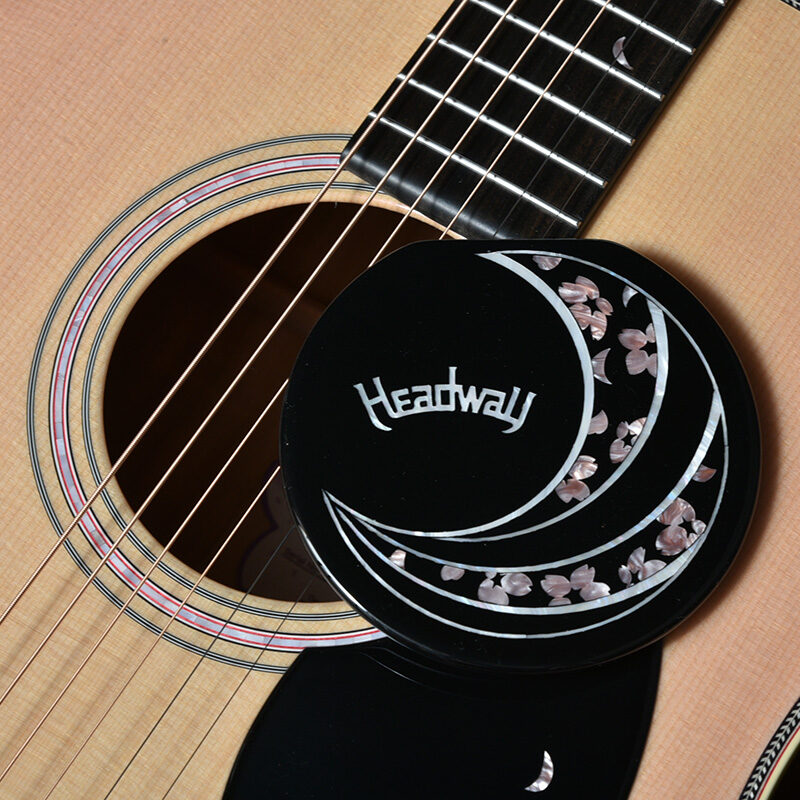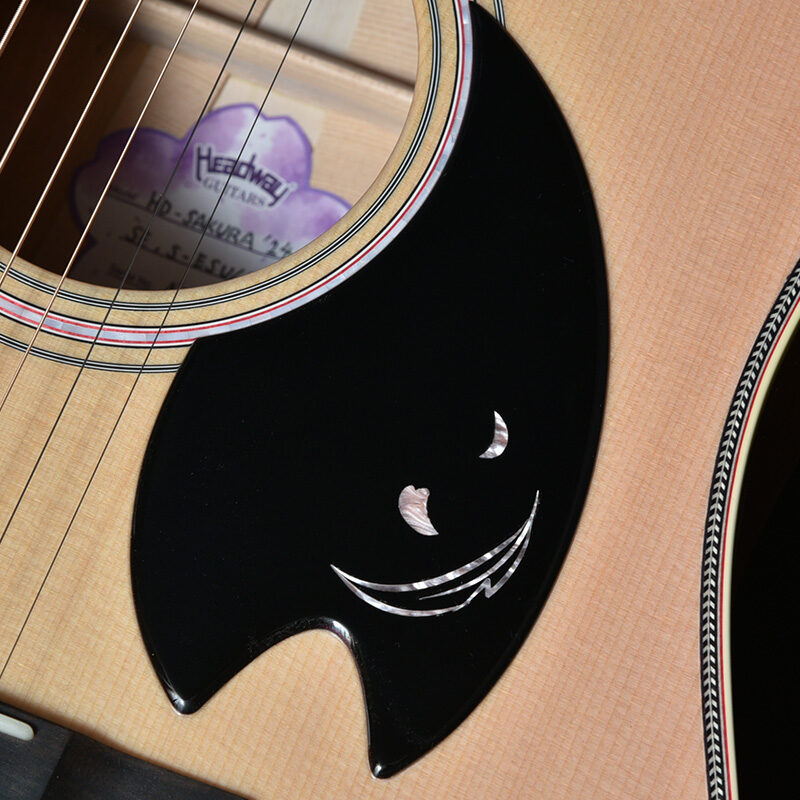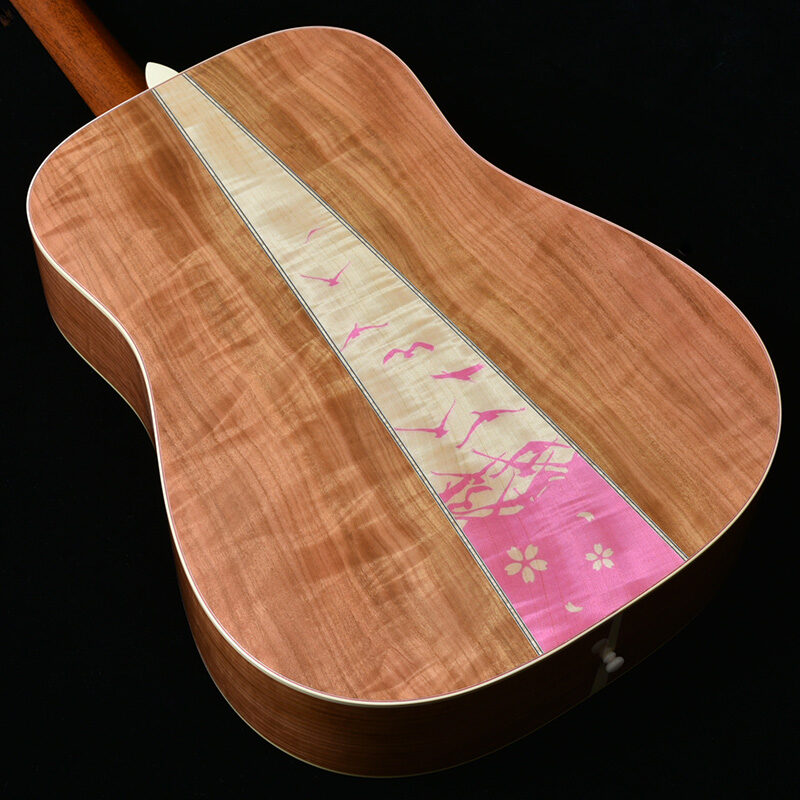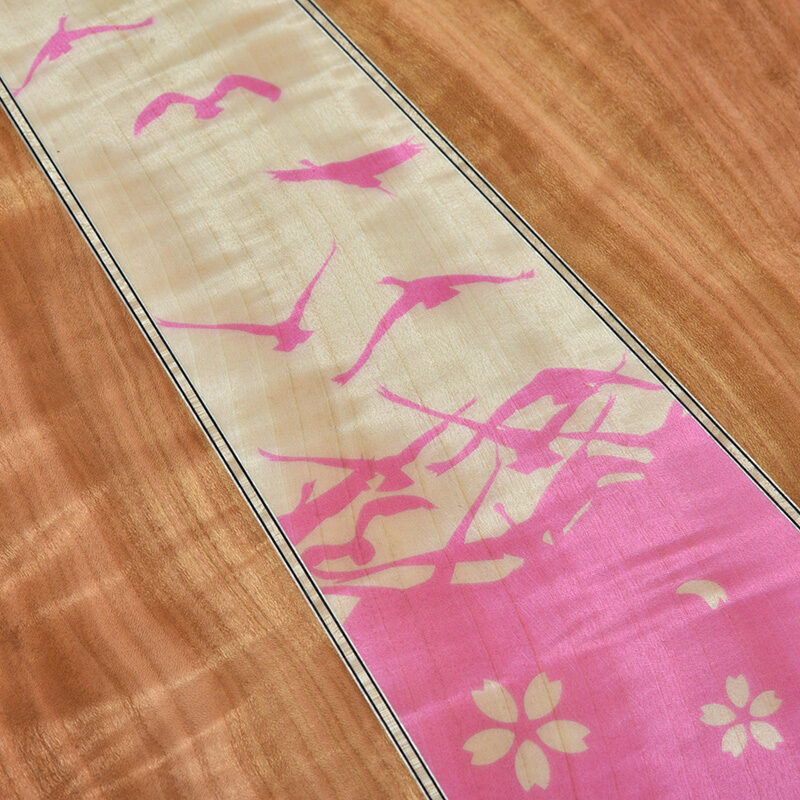HD-SAKURA’24 SF,S-ESU/ATB
MSRP¥360,000 w/o tax
Specification
- Body Top
-
Selected Sitka Spruce
- Body Side&Back
-
Yamazakura with 3P Center: Tochi
- Neck
-
African Mahogany
- Fingerboard
-
Ebony
- Nut
-
High Density Bone(水牛骨)
- Saddle
-
High Density Bone(水牛骨)
- Bridge
-
Ebony
- Machineheads
-
GOTOH®SG301 AB01 GG
- Fret
-
HHF-AG2S
- Scale
-
645mm(25.4inch)
- Neck Grip
-
Extra Slim U Grip
- Width at Nut
-
43mm
- Bracing
-
34 Semi Forward Shifted, Scalloped X Bracing
- Finish
-
Thin Urethane
- Strings
-
Elixir® NANOWEB Light(.012-.053)
- Accessories
-
Hard case, Allen wrench, COA, Soundhole cover
Specifications and design details are subject to change without notice.
Introduction
Video
Headway’s Cherry Blossom Guitar Celebrates its 10th Anniversary
Our Sakura (Japanese Cherry Tree) wood guitar history began with a single ukulele built in 2014. Headway has been working with this wood, which has a different sound and quality than imported wood, with the knowledge and skills we have gained over the years of making guitars. This year, Headway celebrates its 10th anniversary and has created a special model with the hope that it will take another leap forward and spread its wings to the world.
Special Sakura Guitar color filled with our feelings
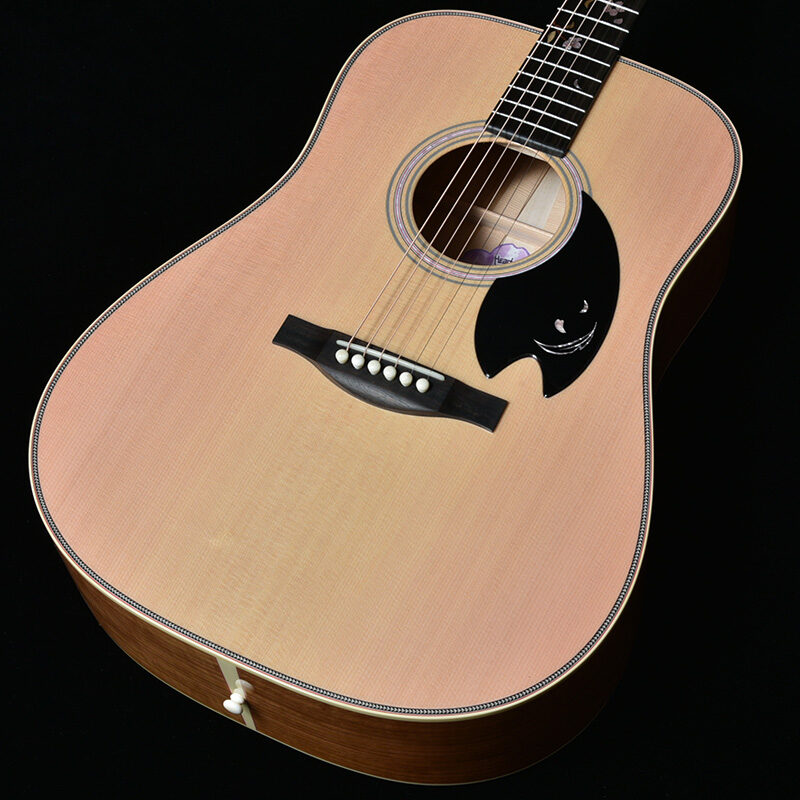
This is the first attempt for Headway’s Sakura (Japanese cherry blossom tree) guitars to use a gradation of color that spreads vertically. Like the rows of cherry blossom trees along the road, the warm cherry blossom color envelops the body. The paint also contains a pearl color, which shimmers and shows various expressions depending on the angle of view.
Design
Crane motif inlay engraved on the headstock
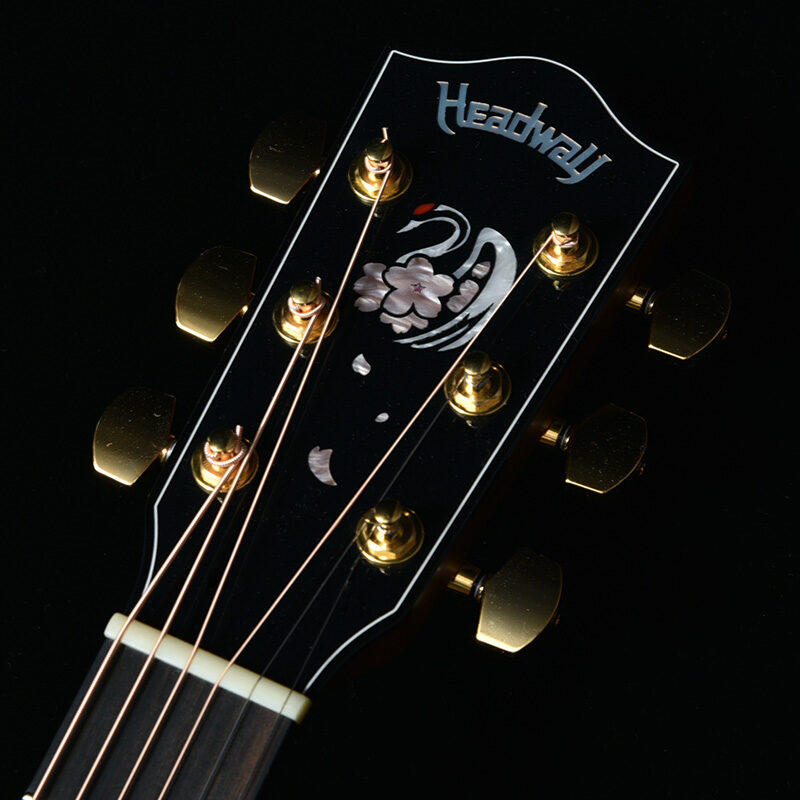
To express our appreciation for the 10th anniversary of Sakura guitars, which many users have supported throughout the years, we designed a “crane” inlay on the headstock, symbolizing good luck. The crane is also a migratory bird, and we hope that this guitar will be loved not only in Japan but also all over the world, transcending the confines of Japan.
Fingerboard inlay with fluttering cherry blossoms
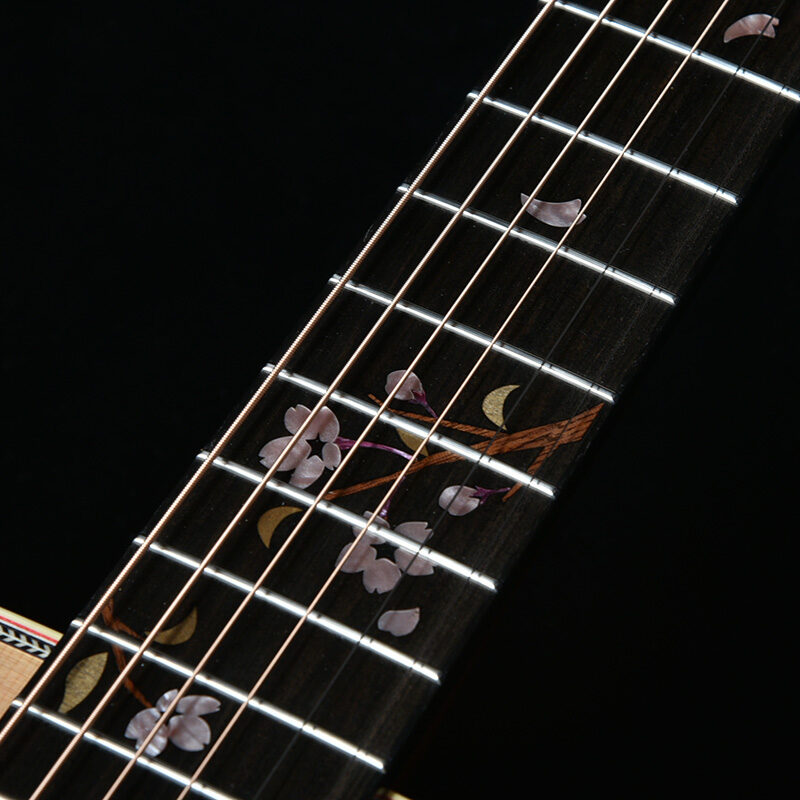
Falling cherry blossom petals and leaves are beautifully represented on the fingerboard by skillfully created inlay work using acrylic and wood.
Designs commemorating the 10th anniversary
Included is a soundhole cover with a limited 10th-anniversary design featuring the image of a crane’s wings covered in cherry blossoms. The pickguard also subtly features crane wings, adding visual storytelling and composition to the guitar as a whole.
Japanese wood materials – Yamazakura (Mountain Japanese Cherry tree) and Tochi (Japanese Horse chestnut)
Tamazakura with its subtle wood grain is used for the Back and Side. It is very hard and has a rich low-midrange, but also produces a sweet sound characteristic of Sakura wood. The backboard is made of Tochi (Japanese horse chestnut), which is also used for the three-piece construction, depicting a group of cranes in flight.
Utilizing all of the ATB series’ latest build techniques
Headway’s “Extra Slim U Neck”, the thinnest in Headway history
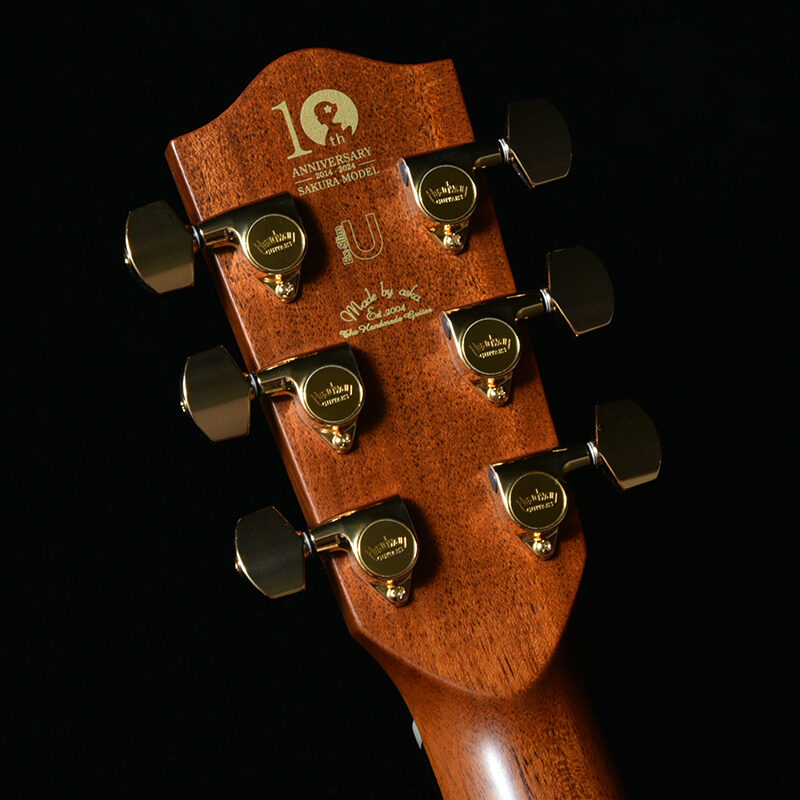
The extra-slim U-neck is the thinnest in Headway’s history and is shaped for easy gripping. Not only is the neck thinner, but it also retains Headway’s traditional characteristics of sturdiness and stability by adding carbon support reinforcement bars to the inside of the neck. This is a reliable neck grip that women and players with small hands should try. The semi-glossy finish, which resembles a neck after it has been used for a while, gives it a good grip that allows the hand to comfortably rest on the neck. In addition, the carbon support bar increases the overall rigidity and gives in turn a better response.
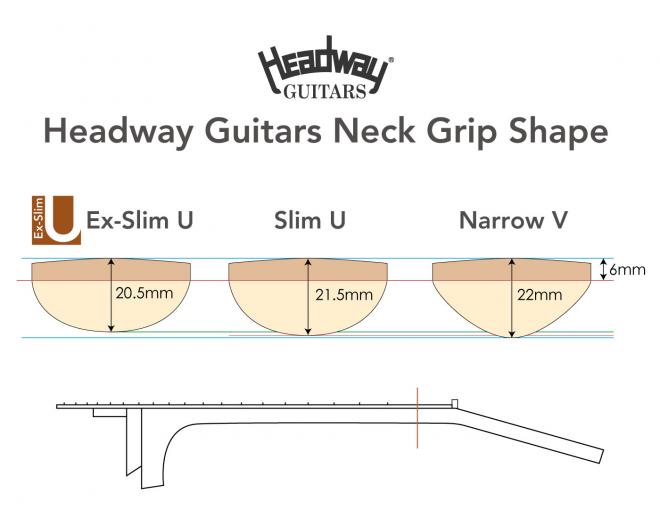
34 semi-forward shifting bracing
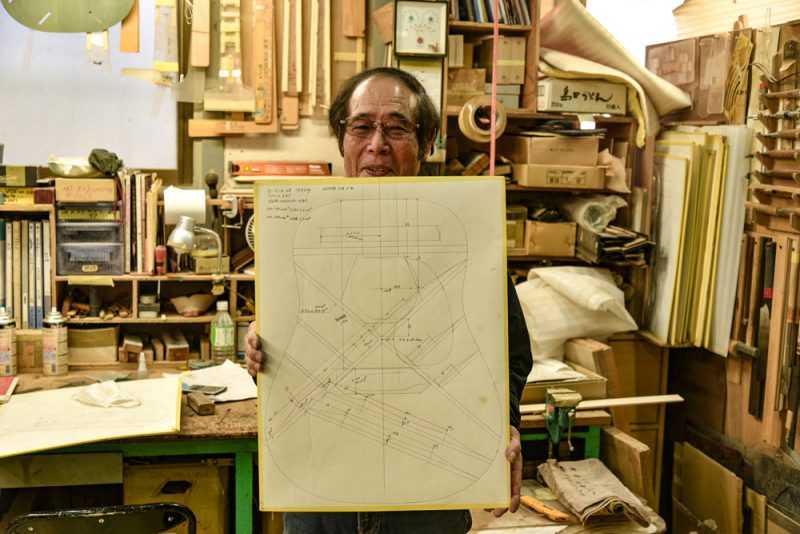
The bracing used for this model was developed by Mr. Momose and it was based on vintage 1934 guitar bracing.
The cross position of the X is a semi-forward shift close to the soundhole, the bass response is better than that of recent designs, and it has a loud sound to it. By being closer to the bridge by about 5 mm than the forward shift, the stability of the top plate is also taken into consideration and improved in the design.
